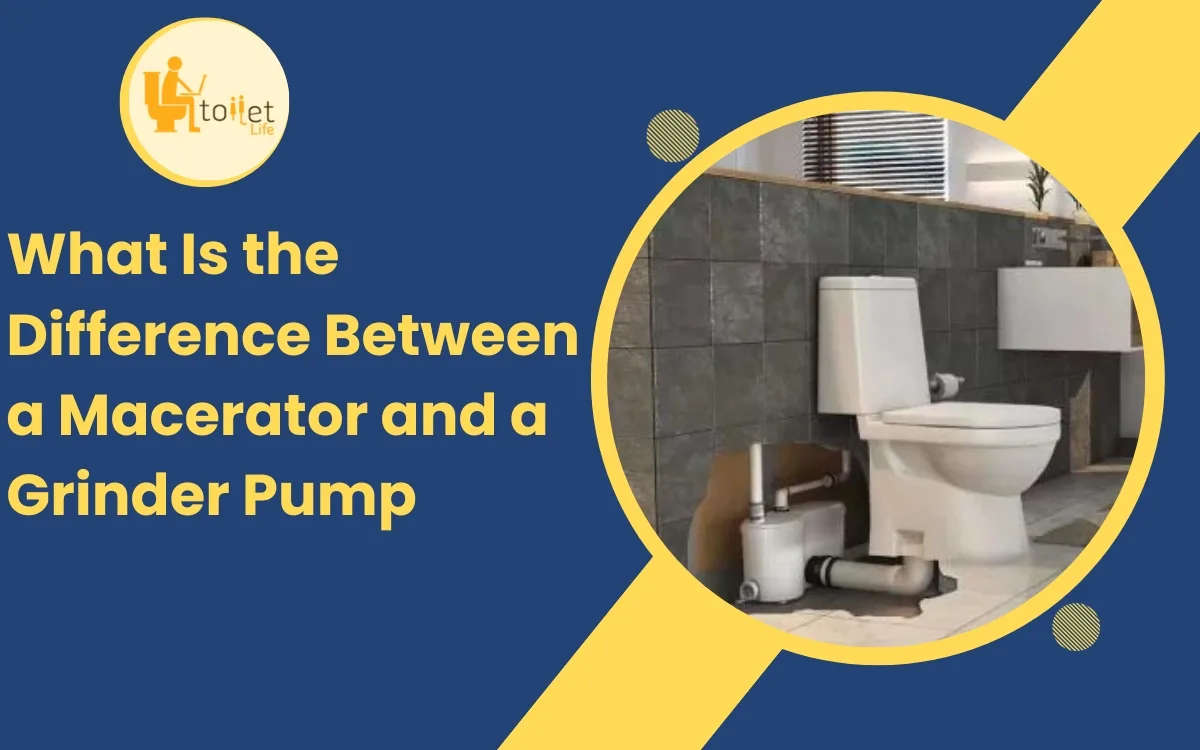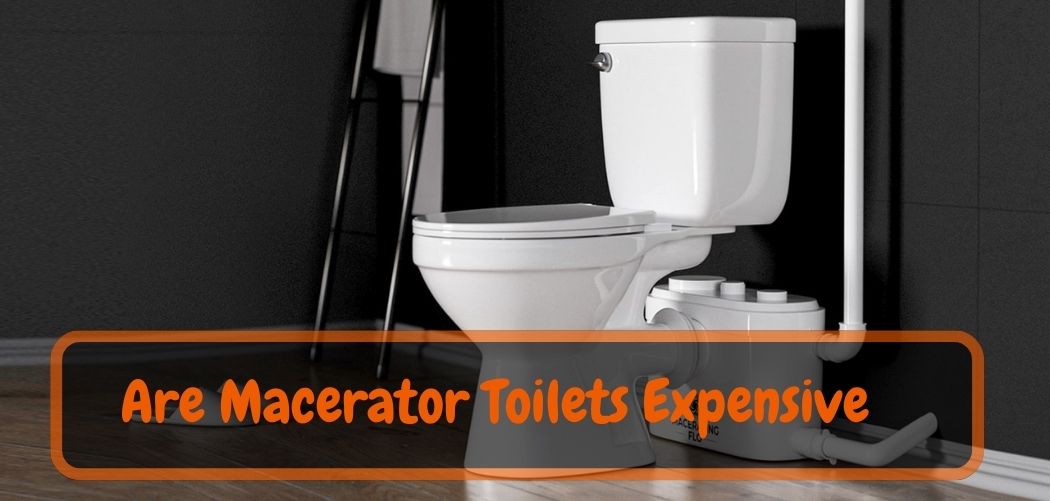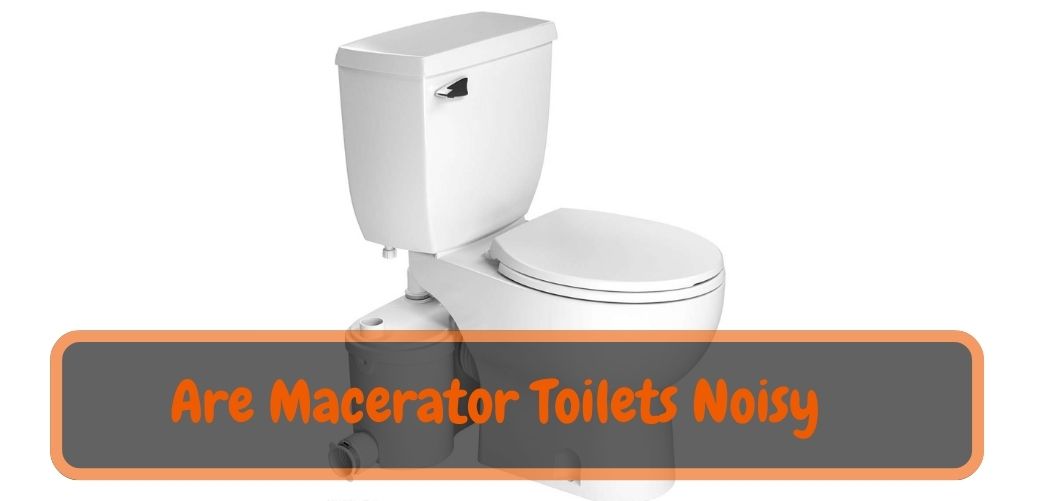A macerator and grinder pump differ in the way they process solid waste into slurry for easier disposal and transportation. A macerator cuts solids into small pieces, while a grinder pump breaks them down into fine particles.
Wastewater management is a critical concern in every residential and commercial setting. Inefficient and inadequate disposal of solid wastes can have adverse effects on the environment, infrastructure, and public health.
Macerators and grinder pumps are two of the most commonly used systems for processing solid waste into slurry for easier transport.
A macerator uses sharp blades to cut solids into small pieces, while a grinder pump grinds them into smaller particles before disposal. This article highlights the critical differences between these two systems and when to use each option.
What Is the Difference Between a Macerator and a Sewage Pump?
A macerator and a sewage pump are both used for wastewater handling, but they serve different purposes and have distinct functionalities:
1. Macerator:
- A macerator is primarily designe to break down solid waste in wastewater into smaller particles or a slurry.
- It is commonly used in residential applications, such as toilets, sinks, and showers, to grind down solid waste before it enters the sewage or septic system.
- Macerators are often installed in bathrooms or kitchens to handle human waste, toilet paper, and other organic materials.
- They are smaller and typically used for individual fixtures or appliances to improve the flow of waste through the plumbing system.
2. Sewage Pump:
- A sewage pump, also known as a sewage ejector pump, is used to transport the collected wastewater from various fixtures in a building to the main sewer line or septic tank.
- Sewage pumps are capable of handling not only liquid waste but also solid waste and other debris found in sewage, including items that should not be flushed down the toilet, such as sanitary products or small objects.
- They are often installed in basements or below ground level to lift sewage and wastewater to the level of the main sewer line or septic system, as gravity alone may not be sufficient for effective drainage.
In summary, the main difference between a macerator and a sewage pump lies in their functions. A macerator's primary role is to grind down solid waste, while a sewage pump is responsible for moving sewage and wastewater from various sources to the main sewer or septic system. They are often used in conjunction in residential or commercial buildings to ensure efficient and sanitary wastewater management.
What Is Another Name for a Grinder Pump?
Another name for a grinder pump is a “sewage grinder pump.” These pumps are also sometimes referre to as “grinder sewage pumps.
Grinder pumps are designe to effectively macerate or grind sewage and solid waste, allowing for the easier transportation of wastewater from homes or buildings to a sewage system or septic tank.
Also Read: Unlocking the Mystery: How Big is a Macerator Toilet?
What Is the Purpose of a Macerator?
The primary purpose of a macerator is to break down solid waste and other organic materials in wastewater into smaller particles or a slurry. Macerators are commonly use in plumbing systems to facilitate the efficient and smooth passage of waste through pipes. Here are the key purposes of a macerator:
1. Reduce Solid Waste Size: Macerators mechanically shred or grind solid waste, such as human waste and toilet paper, into smaller particles. This reduces the risk of clogs in pipes and allows for easier flow through the plumbing system.
2. Enhance Drainage: By breaking down solid waste, macerators ensure that wastewater can more easily transported through pipes, reducing the likelihood of blockages and backups.
3. Enable Flexible Plumbing Installations: Macerators are often use in situations where traditional plumbing systems might challenging to install, such as below-grade bathrooms or remote locations. They allow for more flexible plumbing layouts.
4. Minimize Odors: Macerators can help contain and reduce odors by breaking down waste quickly and moving it through the system efficiently.
5. Increase Efficiency: In some cases, macerators can improve the efficiency of sewage or septic systems by pre-processing waste before it enters the main system.
Common applications of macerators include toilets, sinks, and showers in residential, commercial, and marine settings. They are particularly useful when it's necessary to pump wastewater from a lower location to a higher one, such as in a basement bathroom. Macerators contribute to better waste management and the prevention of plumbing issues like clogs and blockages.
Also Read: What Size Pipe Does a Macerator Use? Find Out Now!
What Is The Macerator Toilet and Grinder Pump Pros and Cons:
Here’s simple table about “ The pros and cons of macerator toilets and grinder pumps:
| Aspect | Macerator Toilet | Grinder Pump |
|---|---|---|
| Pros | 1. Efficient waste breakdown, reducing clogs. | 1. Handles solid waste and large volumes effectively. |
| 2. Ideal for small spaces or remote bathrooms. | 2. Suitable for commercial and industrial settings. | |
| 3. Flexibility in plumbing layout. | 3. Prevents sewage backups and overflows. | |
| 4. Odor control features. | 4. Versatile and can handle various fixtures. | |
| 5. Space-saving design. | 5. Energy-efficient options available. | |
| Cons | 1. May require regular maintenance. | 1. Larger and may not fit in smaller spaces. |
| 2. Limited to smaller-scale applications. | 2. Higher installation and maintenance costs. | |
| 3. Increased risk of mechanical failures. | 3. May produce noise during operation. | |
| 4. Lower pumping capacity compared to grinder pumps. | 4. Requires professional installation in most cases. |
Keep in mind that the choice between a macerator toilet and a grinder pump depends on your specific needs, space constraints, and intended use. It's essential to weigh these pros and cons when making your decision.
Also Read: The Ugly Truth: Disadvantages of Macerator Toilets
What Is the Advantage of a Macerator Pump?
Macerator pumps offer several advantages that make them a valuable addition to plumbing systems in various settings. Some of the key advantages of macerator pumps include:
1. Efficient Waste Processing: Macerator pumps are designe to break down solid waste and organic materials, reducing them to smaller particles or a slurry. This efficient processing prevents clogs and blockages in plumbing systems, ensuring a smoother flow of wastewater.
2. Flexibility in Plumbing Layout: Macerators allow for more flexible plumbing installations. They can use in locations where traditional gravity-based drainage is impractical, such as basements, remote bathrooms, or areas with low sewage lines.
3. Space-Saving: Macerator pumps are compact and can installed in smaller spaces. This can be especially beneficial in areas with limited room for plumbing fixtures and pipes.
4. Reduced Installation Costs: Installing a macerator can be more cost-effective than extensive plumbing renovations required for traditional gravity-based systems in certain scenarios.
5. Odor Control: Macerator pumps often come equipped with features to reduce and contain odors associated with sewage and waste, contributing to a more pleasant and sanitary environment.
6. Versatility: They can use for various applications, including toilets, sinks, showers, and appliances. This versatility makes macerators suitable for both residential and commercial settings.
7. Backup Prevention: Macerator pumps can help prevent backups and overflows ensuring that waste is efficiently processe and transporte through the plumbing system.
8. Energy Efficiency: Some macerator pumps are designe to operate with low energy consumption, making them energy-efficient solutions for waste management.
9. Marine and RV Use: Macerator pumps are commonly use in boats, yachts, and recreational vehicles (RVs) to handle sewage and waste. They are crucial in maintaining sanitary conditions on board.
Overall, macerator pumps provide an effective and convenient way to manage waste in situations where traditional gravity-based plumbing is impractical or cost-prohibitive. They help prevent plumbing issues, enhance space utilization, and maintain cleanliness and hygiene, making them a valuable choice in various applications.
Also Read: What Is a Sanitary Macerator Toilet: Unveiling the Done Convenience!
FAQ: Macerator Definition and Sewage Pumps:
Q1: What is the definition of a macerator?
A1: A macerator is a device used in plumbing systems to break down solid waste and organic materials in wastewater into smaller particles or a slurry, facilitating efficient drainage and preventing plumbing blockages.
Q2: How does a macerator work?
A2: Macerators work by using blades or other mechanical means to shred and grind solid waste, such as human waste and toilet paper, into smaller pieces, making it easier to transport through pipes.
Q3: Where are macerators commonly used?
A3: Macerators are commonly used in residential and commercial applications, including toilets, sinks, showers, and appliances. They are particularly useful in locations where traditional gravity-based plumbing is impractical.
Q4: What is a sewage pump?
A4: A sewage pump, also known as a sewage ejector pump, is a device used to transport wastewater, including liquid and solid waste, from various fixtures in a building to the main sewer line or septic tank. It is essential for moving sewage to a higher level when gravity drainage is insufficient.
Q5: What are the primary functions of a sewage pump?
A5: Sewage pumps are designed to lift sewage and wastewater from lower locations, such as basements or remote bathrooms, and transfer it to the main sewer system or septic tank. They can handle not only liquid waste but also solid waste and debris.
Q6: How do macerators and sewage pumps differ in their functions?
A6: Macerators are primarily responsible for breaking down solid waste and improving drainage within plumbing systems, whereas sewage pumps focus on the transportation of sewage and wastewater to a higher level or the main sewage/septic system.
Q7: Can macerators and sewage pumps be used together?
A7: Yes, in some plumbing systems, macerators and sewage pumps are use in conjunction. Macerators can pre-process waste before it enters the sewage pump, improving overall system efficiency and preventing clogs.
Q8: Are there energy-efficient options for macerators and sewage pumps?
A8: Yes, many modern macerators and sewage pumps are designe with energy-efficient features, which can help reduce operational costs and environmental impact.
Q9: What are some common applications for sewage pumps?
A9: Sewage pumps are commonly use in homes, commercial buildings, and industrial settings to transport wastewater from toilets, sinks, showers, and other fixtures to the main sewer or septic system.
Q10: How can I choose the right macerator or sewage pump for my specific needs?
A10: Selecting the right macerator toilet or sewage pump depends on your specific plumbing requirements, building layout, and intended applications. Consult with a plumbing professional or refer to the manufacturer’s guidelines for guidance on choosing the most suitable option.
Closing Reminder:
Understanding the distinction between a macerator and a grinder pump is crucial for effective wastewater management. Macerators are designe to break down solid waste and improve drainage within plumbing systems, making them ideal for homes and smaller applications.
On the other hand, grinder pumps are built to handle larger volumes of sewage and solid waste, typically in extensive commercial or industrial settings. Selecting the right system depends on your specific needs and infrastructure.
So, whether it’s a macerator for a residential bathroom or a grinder pump for a large-scale facility, choosing the appropriate solution ensures efficient and trouble-free wastewater disposal.










